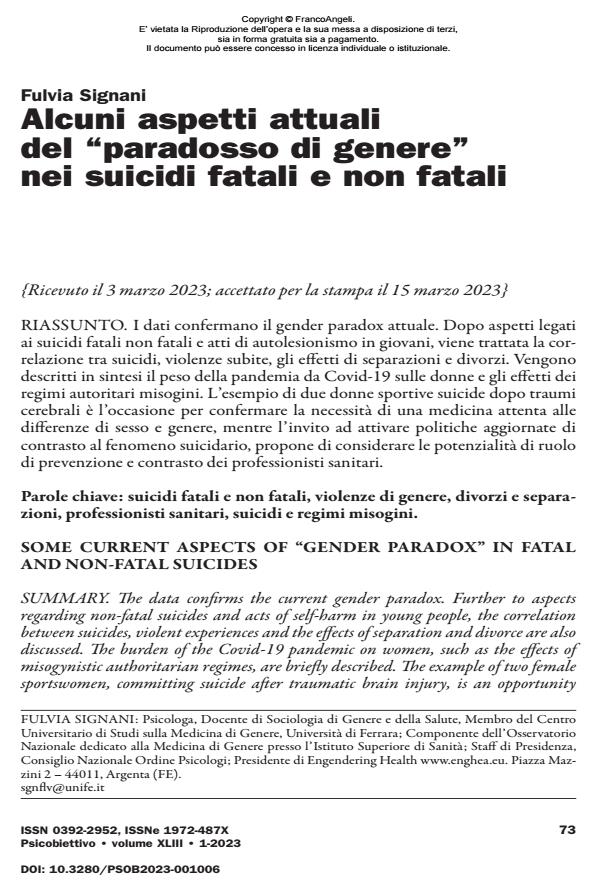Some current aspects of "gender paradox" in fatal and non-fatal suicides
Journal title PSICOBIETTIVO
Author/s Fulvia Signani
Publishing Year 2023 Issue 2023/1
Language Italian Pages 12 P. 73-84 File size 629 KB
DOI 10.3280/PSOB2023-001006
DOI is like a bar code for intellectual property: to have more infomation
click here
Below, you can see the article first page
If you want to buy this article in PDF format, you can do it, following the instructions to buy download credits

FrancoAngeli is member of Publishers International Linking Association, Inc (PILA), a not-for-profit association which run the CrossRef service enabling links to and from online scholarly content.
The data confirms the current gender paradox. Further to aspects regarding non-fatal suicides and acts of self-harm in young people, the correlation between suicides, violent experiences and the effects of separation and divorce are also discussed. The burden of the Covid-19 pandemic on women, such as the effects of misogynistic authoritarian regimes, are briefly described. The example of two female sportswomen, committing suicide after traumatic brain injury, is an opportunity to confirm the need for sex and gender-sensitive medicine, while the call for up-to- date policies to counter the suicide phenomenon proposes the consideration of counter preventitative roles by health professionals.
Keywords: fatal and nonfatal suicides, gender-based violence, divorce and separation, health professionals, suicides and misogynistic regimes.
Fulvia Signani, Alcuni aspetti attuali del "paradosso di genere" nei suicidi fatali e non fatali in "PSICOBIETTIVO" 1/2023, pp 73-84, DOI: 10.3280/PSOB2023-001006